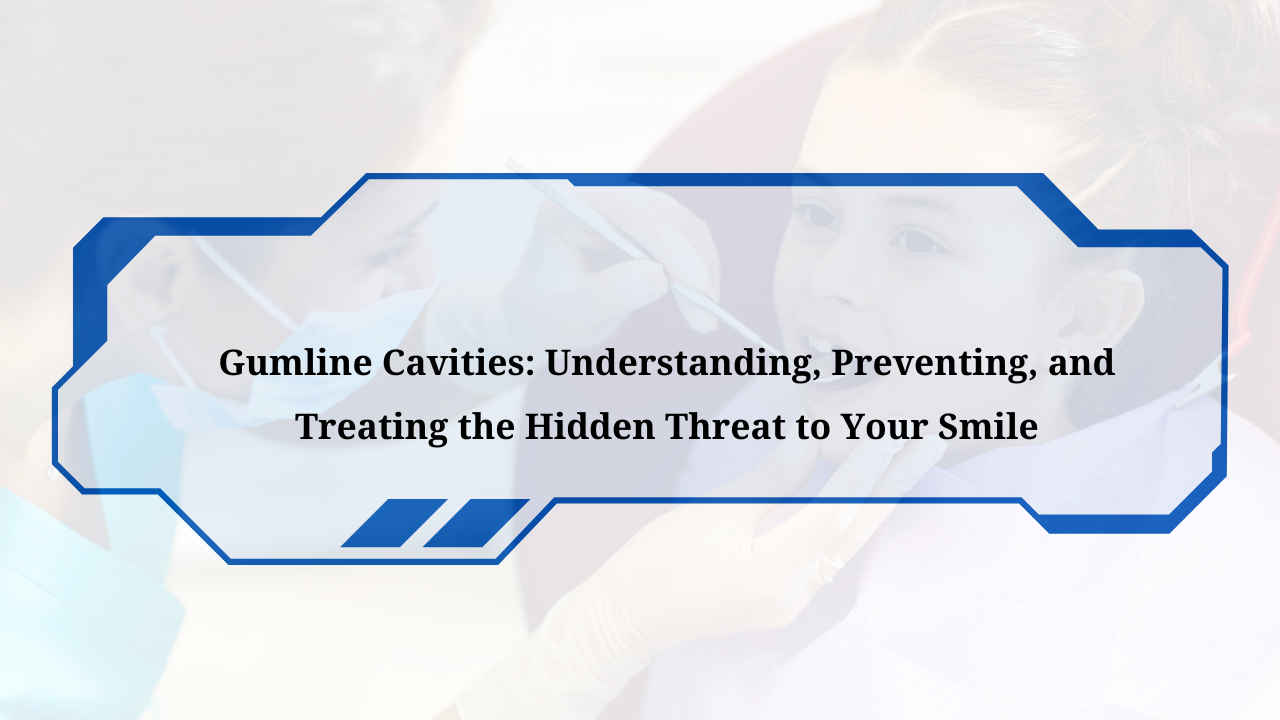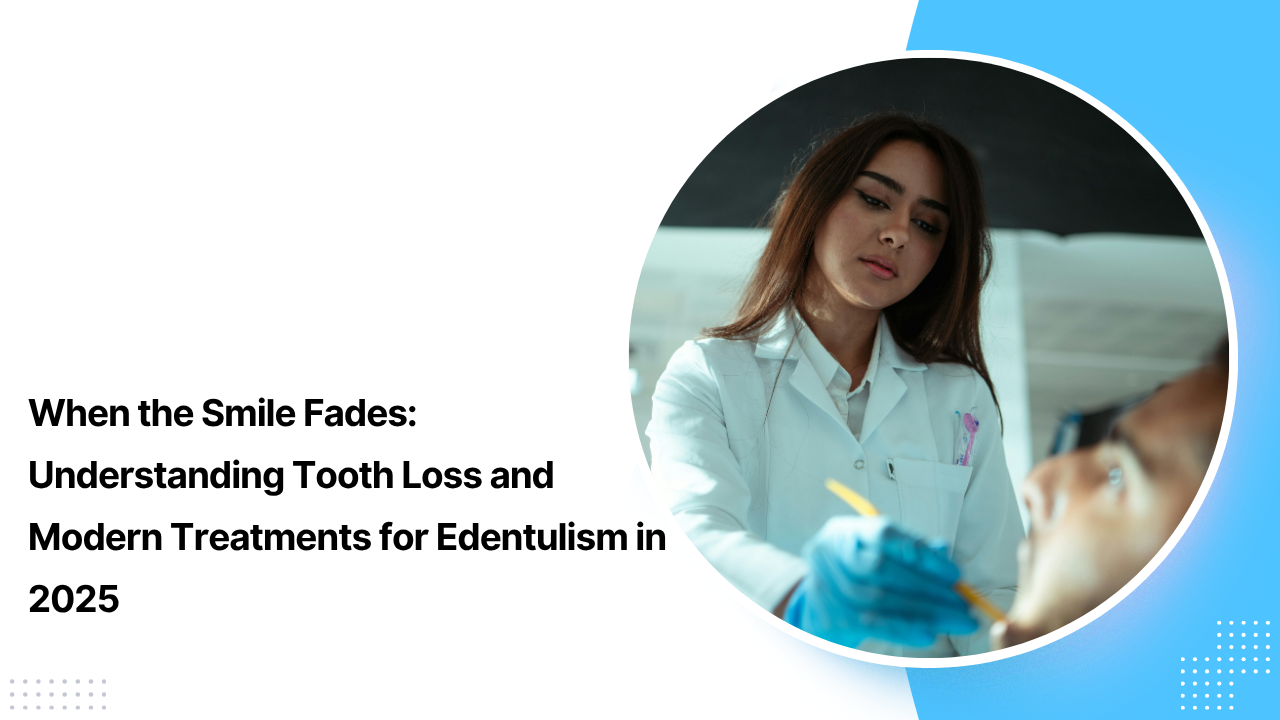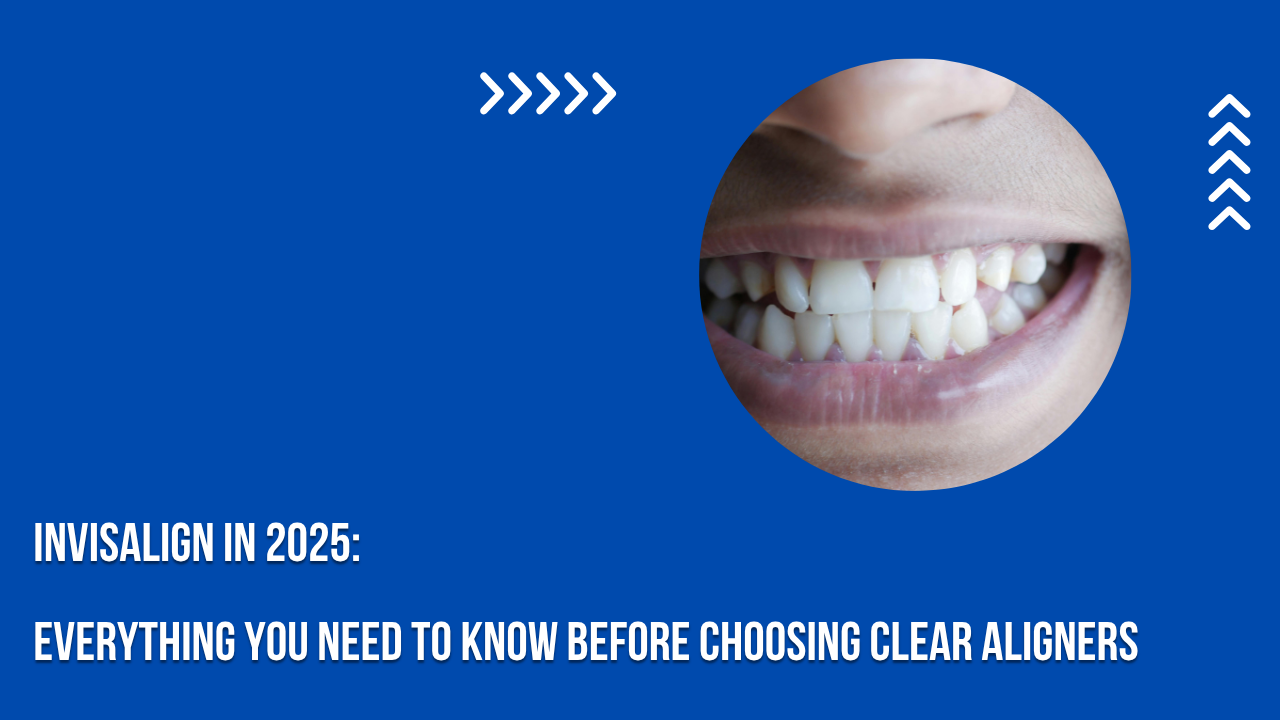When most people think of cavities, they picture small holes forming on the tops of their teeth after years of eating sugary snacks and neglecting brushing. However, there is a quieter, more subtle type of tooth decay that often goes unnoticed until it causes significant problems: the gumline cavity. Unlike cavities that develop on chewing surfaces, this one occurs right where the tooth meets the gum. Although it may seem like a minor detail, its location makes it more complicated, and it is becoming increasingly common today.
This guide will explain everything you need to know — what gumline cavities are, why they are more important now than ever, how they develop, and most importantly, how you can prevent them from harming your oral health.
What Is a Gumline Cavity?
A gumline cavity is a form of tooth decay that appears at the point where the tooth and gums meet. Unlike cavities on the crown of the tooth (the visible part when you smile), these often occur on the root surface or just below the gum line.
The key difference lies in the protective layers. The tooth crown is covered by enamel, the hardest substance in the human body, which is highly resistant to decay but not indestructible. Below the gumline, the tooth root is covered by cementum, a much softer material that is more vulnerable to bacteria and acids. When gums recede and expose this area, cavities can develop more quickly and progress more aggressively than expected.
Why Gumline Cavities Are More Significant Today
Dental professionals have long been aware of gumline cavities, but they have become especially relevant due to changes in modern lifestyles. Here are some main factors contributing to this trend:
1. Gum Recession at Younger Ages
In today’s high-stress environment, habits like teeth grinding, jaw clenching, and aggressive brushing are common. These behaviors accelerate gum recession, exposing the root surfaces at an earlier age. The sooner gums recede, the longer these vulnerable areas remain exposed.
2. The Acidic Modern Diet
Consumption of energy drinks, fruit juices, sparkling water, coffee, and processed foods is more frequent than ever. Many of these are acidic, which weakens the outer layers of teeth and makes the gumline more prone to erosion and decay.
3. Dry Mouth Caused by Medications
Medications are a regular part of modern life, but many common drugs — including antidepressants and blood pressure medications — cause dry mouth as a side effect. Saliva plays a vital role in neutralizing acids and removing food particles. Without sufficient saliva, bacteria flourish, and cavities spread more rapidly.
4. Longer Lifespan, Extended Exposure
People are living longer and retaining their natural teeth well into old age. While this is a positive development, it also means teeth experience more years of wear, increased gum recession, and a higher risk of decay along the gumline.
5. Delayed Dental Care
It’s common to delay routine dental checkups due to busy lifestyles or financial reasons. However, gumline cavities often progress without noticeable symptoms. By the time they become apparent, more extensive and invasive treatments are usually necessary.
How Gumline Cavities Form
Understanding gumline cavities involves looking at the process step by step:
- Plaque buildup: A sticky film of bacteria accumulates around the gumline when oral hygiene is insufficient.
- Acid attack: Bacteria feed on sugars and carbohydrates, producing acids that erode the tooth surface.
- Fragile cementum: Unlike enamel, cementum is thin and less mineralized, making it more vulnerable to rapid decay once exposed.
- Progression: Over time, the cavity deepens and often extends below the gumline, making treatment more complicated.
Warning Signs Not to Overlook
Although early gumline cavities may not cause pain, your mouth often signals their presence. Watch for:
- Sensitivity to hot, cold, or sweet foods.
- Small grooves or indentations near the gums.
- Discoloration along the gum edge.
- Localized gum irritation or inflammation.
- A subtle difference in how a tooth feels during brushing.
Noticing these subtle signs early can help you avoid more extensive treatments later on.
Modern Treatment Options
Dentists now offer various treatments for gumline cavities depending on the severity:
- Fluoride treatments to strengthen weakened areas in the early stages.
- Tooth-colored resin composite fillings to seal decay and blend naturally.
- Glass ionomer materials that release fluoride over time, often used near the gumline.
- Crowns or onlays for advanced decay affecting large parts of the tooth.
- Periodontal therapies to address gum recession, sometimes including grafting procedures.
Prevention: Staying Ahead of Gumline Cavities
The most effective way to manage gumline cavities is to prevent them. Simple, mindful habits can make a significant difference:
- Use a soft-bristled toothbrush and apply gentle pressure; brushing harder doesn’t mean better cleaning.
- Hold your brush at a 45-degree angle toward the gumline to clean effectively without damaging gums.
- Use fluoride toothpaste to strengthen enamel and root surfaces.
- Floss or use interdental brushes daily.
- Limit frequent snacking, especially sugary or acidic foods.
- Stay hydrated and chew sugar-free gum to stimulate saliva production.
- Visit your dentist regularly every six months or as recommended.
The Impact of Lifestyle on Gumline Health
Preventing cavities along the gumline involves more than just brushing and flossing; your overall lifestyle plays a crucial role. Managing stress can help reduce teeth grinding, while a balanced diet rich in calcium and vitamin D strengthens your teeth. Avoiding smoking enhances gum health and lowers the risk of cavities and gum disease. Think of it as a comprehensive approach: the daily choices you make influence the long-term health of your smile.
Why Awareness Is Important
Gumline cavities are concerning not only because they are common but also because they develop quietly. Many people only discover them during routine dental check-ups. By the time symptoms like sensitivity or pain appear, the cavity may already require more extensive treatment. Increasing awareness encourages a shift from reactive care to proactive prevention.
Advancements in Cavity Prevention
Dentistry is advancing, offering more effective prevention and treatment options:
- Biomimetic materials that replicate natural tooth structure.
- Laser dentistry for precise, minimally invasive procedures.
- Saliva testing technologies to assess cavity risk.
- Digital tools and apps that help remind and monitor oral care routines.
As these innovations become more accessible, patients will have improved resources to safeguard their teeth and gums.
In Conclusion
Although gumline cavities receive less attention than those on chewing surfaces, they warrant equal—if not greater—concern: their hidden position, rapid progression, and link to gum health present unique challenges. Modern lifestyles, with acidic diets, stress, medications, and longer lifespans, have made these cavities increasingly common.
The positive news is that prevention is achievable. Through attentive oral hygiene, balanced lifestyle habits, and regular dental visits, you can prevent gumline cavities from becoming a problem.
Your smile reflects more than just appearance—it mirrors your overall health. Protecting it means paying close attention to the small details, including the area where your tooth meets your gum.




